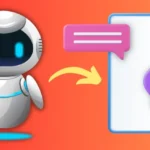Complete Microsoft Playwright Python Training
Use Playwright with PyTest to Create Automation Test Cases from Scratch
What you’ll learn
Complete Microsoft Playwright Python Training
- By combining Playwright with PyTest, you get complete automated test cases.
- Learn how to utilize Playwright’s interactive mode and code generator.
- Investigate the Playwright Trace Viewer.
- The Playwright teaches command-line arguments.
- They include device emulations and configurable viewpoint sizes.
- Debug test cases
- APIS Testing Expertise
- Learn the statements and authentications of the playwright.
- Test events, frames, downloads, and uploads.
- Find out more about network testing automation.
- Create test case videos and reports using Playwright.
Requirements
-
An interest in learning Python and playwriting.
Description
You will learn Playwright, the newest and fastest-emerging automated testing tool, in this course. It is an open-source test automation library that Microsoft contributors first created. A cross-browser automation library for end-to-end testing is called Microsoft Playwright. Playwright aims to provide developers and testers with a common API to automate their online applications across the three main browser engines of the present: Mozilla, Firefox, and WebKit. It is the fastest and most reliable system on the market right now. It is easy to set up and has a lot of features.
You will learn a special method for Playwright and PyTest integration in this session.
You will learn how to use Microsoft Playwright with the help of several examples and personal projects in this course. A Pytest plugin is provided by the playwright for creating end-to-end tests. You will learn how to use Playwright to create reliable automation tests for your application using PyTest and Python. In this place, you will learn by doing.
Teaching Resources
- Section 4: This section discusses Playwright installation, environment setup, and plugins at their most fundamental levels. You will learn how Playwright compares to other software test automation technologies on the market.
- You will get the whole Playwright toolkit in Section 5. You will learn how to auto-generate test scripts, test reports, images, and even videos of your running test cases, as well as how to use the Playwright debugging tools.
- In Section 6, you’ll discover how to use PyTest with Playwright to produce independent test cases. You’ll do testing on well-known websites, including Wikipedia, YouTube, and Google.
- After you feel comfortable with the test cases, continue on to implementing API tests in Section 7. You may learn how to test dialogs, downloads, emulations, and authentication here.
- Testing frames and networks will be covered in Section 8. You will become proficient with playwright handlers and locators. You can use them to do HTTP queries, choose which radio buttons to select or deselect, and fill out forms automatically.
- You will visit the Automation Playground, a website designed exclusively to evaluate your proficiency with automation testing. You can learn how to use Playwright’s clicks, scrollbars, checks, delays, layers, and other features there.
- Section 10: To complete this course, you will create a comprehensive playwriting test project. Using all you have learned in the course, you will be able to test the GitHub project management website using your abilities. You will have to set up and manage automatic user registration and authentication, branch creation, and ticket creation.
Playwright Benefits
- Simple Setup and Configuration: Because it is a test automation framework, the installation just requires a small amount of time. The installation procedures may vary depending on the language that we use with Playwright.
- Safari, Firefox, and the Chromium browser family (Chrome and Edge) are all supported.
- A playwright is a well-liked option since it supports Java, C#, Python, and Javascript/Typescript. This functionality is absent from the majority of current open-source test automation frameworks.
- The playwright provides functional, end-to-end, and API testing, among other testing types. Playwright and accessibility testing may be combined using a third-party plugin.
- Through the use of Browser Context, Playwright also enables the running of concurrent tests that use different browsers. This expedites testing and is useful when many web pages need to be examined at once.
- Support for multiple tabs and browser windows is provided by Playwright.
- Some test cases require opening a new window, checking the scenario, and then returning to the original window. The dramatist is in favor of every kind of test case.
- List, Dot, Line, JSON, JUnit, and HTML Reporters are just a few of the useful reporters that are included by default with the Playwright framework. The intriguing aspect is that Playwright allows for the creation of unique reporters. The playwright further supports Allure Report, an unbiased journalist.
- Support for Typescript out of the box: It understands both your Typescript and Javascript code, so you don’t have to change anything to make it work with Typescript.
- Support for CI or CD Integration: Playwright provides CI or CD integration support.
- Even Docker images are available for several language bindings.
- The playwright has a variety of debugging capabilities, making it developer-friendly. Support for Debugging Tools Some options for debugging are Playwright Inspector, VSCode Debugger, Browser Developer Tools, and Trace Viewer Console Logs.
Who this course is for:
- Software testers are software engineers.
- Computer science majors, software engineers, and everyone who wants to learn scriptwriting and software development.










